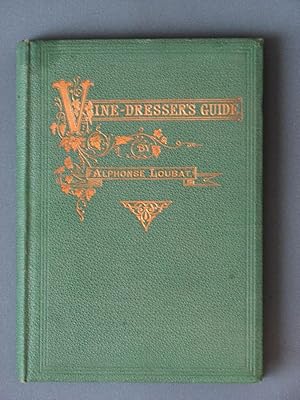Nova Scotia Anglers Handbook Of North
Considered the most primitive form of all the North American whitefishes, the. Read the Nova Scotia Angler's Handbook you receive when you purchase your.
Location of Cumberland County in Nova Scotia. Cumberland County [ ] There are two Black Lakes in. El factor fred descargar pdf gratis. One is located.
This is the deepest lake in the province, with a depth of 72 metres (236 ft) The lake is 5.7 miles (9.2 km) northeast of. Fish include, and.
The lake is surrounded by nutrient poor coniferous forest dominated by canopy, with high shrub and cover. As of 2005 there was a woodlot near the lake with about 200 specimens of the economically valuable. The other Black Lake in Cumberland county is located at between and. As of 2010 about 200 were present near the lake in a mixedwood and old field environment, with the oldest tree 148 years of age.
Location of Pictou County. Pictou County [ ] There are four Black Lakes in. One is located at, just to the west of.
The lake is drained by the East River, Pictou, which flows into the. It is surrounded by forestry land., which is not a native species in Nova Scotia, was illegally introduced around 1998. The lake used to have a good population of, and several other species, but since the pickerel were introduced the trout, perch and minnows have no longer been found. An estimated 1,100 pickerel were in the lake in 1998, some as large as 1.25 kilograms (2.8 lb). The lake is open for winter fishing of chain pickerel by holders of a general fishing license.
In 2006 the season was 1 January to 31 March, with a bag limit of 25 fish per day. The same dates and bag limit applied in 2011. On 19–20 February 2011 the ministry threw the lake open to fishers who did not have a license. In 2012 the lake was open all year for chain pickerel fishing. Location of Yarmouth County. Yarmouth County [ ] The Black Lake in is about 27 kilometers south west of and it is the third lake just west of the collector road. About equidistance to the south along 203 is the town of within The lake is located at: Complete list [ ] Coordinates of all the Black Lakes are: County Coordinates Colchester Cumberland Cumberland Guysborough Halifax Halifax Halifax Halifax Halifax Inverness: Inverness Lunenburg Pictou Pictou Pictou Pictou Queens Victoria Yarmouth See also [ ].
The day thousands of Nova Scotians have been waiting for arrived on Friday, as the annual fishing season opened. “They’ve actually been counting (the days) since the lakes unthawed,” says Terry Beck, an enforcement officer with the province who works out of Lunenburg. Over 100,000 people sport fish in Nova Scotia lakes and rivers annually, contributing about $58 million to the local economy. This year the province is fishing for anglers in the U.S. And Europe in the hopes they’ll hook them into coming here for the abundant fishing opportunities the province has to offer. There aren’t many regulatory changes for 2016 but there is a new provincial sport fishing strategy on the horizon, said a spokesman for the department of Fisheries and Aquaculture.
Details are still being worked out. Beck advises anglers to check the 2016 Anglers Handbook for the specific rules for fish species in each of the six different recreation regions around the province. “There are bag limits for specific species and also possession limits,” he said. Officials are trying to crack down on importation of species into other water environments, so it’s illegal to transport live fish. Beck says for the most part Nova Scotians toe the line. Anyone over 16 must purchase a licence. There are several categories but one-day licences will cost you $12.71.
A summary of regulations accompanies each licence issued. If you plan on fishing in any of the province’s national parks such as Kejimkujik, you need a separate federal fishing licence, said the park’s resource conservation manager, Chris McCarthy.
Their season runs from April 1 to Aug. McCarthy says the park is always open but some facilities are not and staff are more sparse until the Victoria Day long weekend. Part of McCarthy’s role is to look after visitor safety as well as monitoring fish abundance and their condition. There are about 12 species in park waters, and brook trout is a popular catch this time of year. Perch and brown bullhead tend to appear as the park’s shallow waters get warmer. “Our results show their abundance hasn’t changed much in 30 years, so that’s good.” May and June are the best fishing months, but he said the shoulder seasons can be challenging on safety.
“This time of year you have to rely more on self-rescue and self-reliance,” he said. “The water is still cold so hypothermia is still a concern,” he said, “so wear a personal floatation device.” It doesn’t take much for a canoe to get tippy, he said. “We still have some enforcement staff around, but let someone know where you’re going and self-register if you’re camping,” he advised. If you want to know more about fishing and camping at Kejimkujik, conservation officer Jennifer Eaton will be at the Trail Shop on Quinpool Road as part of their Tuesday Talks series starting at 6:30.
Download lagu ultraman tiga-send forme. Disclaimer: All contents are copyrighted and owned by their respected owners. Mp3take is file search engine and does not host music files, no media files are indexed hosted cached or stored on our server, They are located on third party sites that are not obligated in anyway with our site, Mp3take is not responsible for third party website content.
